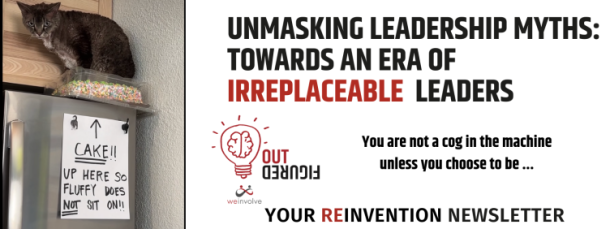Did Harley Davidson Make a Pig’s Ear of the Livewire?
There’s an old English saying, ‘You can’t make a silk purse out of a sow’s ear,’ meaning you can’t make something of high quality from low-quality ingredients. From this old saying is born another phrase, ‘to make a pig’s ear of it,’ meaning to take something of sound origin and mess it up beyond redemption.
I bring this up because it feels apt for today’s discussion of Harley Davidson’s Livewire electric motorcycle.
Take a Silk Purse Brand…
Harley Davidson, it could be argued, is a silk purse of a brand. Established in 1903 and incorporated in 1907, by the 1920s the Harley Davidson was already the biggest motorcycle manufacturer in the world. Its ‘Wrecking Crew’ dominated motorcycle dirt track racing. The ‘Hog’ nickname so synonymous with Harleys today comes from race team member Ray Weischam’s piglet, which became the team mascot. The nickname and the brand’s image have only grown in strength over the course of a century.
Harley Davidson is one of those rare brands that people tattoo on their skin because it means so much to them. To those on the inside, Harley Davidson means community. It means a specific experience and signifies a certain way of life. When you buy a Harley Davidson, you buy a membership into a very exclusive club.

Introduce a Livewire…
On a course I took recently at MIT university, I learned that Harley Davidson wanted to lead the motorcycle industry into the electric age. Committed to sustainability, they invested a lot of time, energy, and money into designing an electric motorcycle. What they came up with was the Livewire.

The Livewire, despite a decade in development, launched in 2019 to a lukewarm response, with sales to match. In 33 months, it managed to rack up just 1,942 wholesale units and only 1,648 retail sales. Worldwide.
Livewire’s sales have been disappointing, to say the least.
Blaming the Hog’s ear
In the post-mortems of the Livewire launch and resulting meagre sales figures, one obvious reason that comes up is the sound. Harleys have a distinctive, throaty sound that their fans love. For many people, a Hog doesn’t just make a lot of noise, it makes a very specific noise.
But when you put an electric battery into a motorbike, it doesn’t make that noise. Although electric engines are typically quiet, the Livewire’s beast of an engine does make its own distinctive noise, it’s more a futuristic whine that the familiar throaty roar. And so, everyone thinks this was why the Livewire flopped and why it wouldn’t work for Harley Davidson to move into electric motorbikes.
You can hear the Livewire in action here https://www.youtube.com/watch?v=r7FSX6Ra8b8.
But is it really that true? Is that the main reason, because it doesn’t make the right noise?
A More Entrenched Problem
Going a little deeper and talking from my own experience, I think there’s more to it than that.
I used to be a part of a motorbiking community, including the Harley Davidson community. I have a little insight from my immersion in that community and being part of the plot.
Bikers like to share their experiences. They meet up regularly to swap stories, discuss engine issues, and buy and sell parts. There’s a big plot with lots of activities going on. The people there share the same values, the same needs and the same systems and motivations.
Harley Davidson is a sub-set of that community. It’s a classic motorbike. Yes, it’s noisy, but noise is only part of the appeal. There’s the classic, old-fashioned look. The laid-back comfort of the low-rider position on the touring and cruising models.
The Livewire model looked like a variation on a Honda. It has a raised seat, set back from the handlebars, forcing the rider into a more forward-leaning, sporting ride position.
Having spent some time with the biker’s community, I was very surprised by it. My first response was that it just doesn’t look the part. It doesn’t look like a Harley Davidson.
The bike’s design was not what I understood Harley Davidson to stand for, and that was without even hearing it.
Any design needs to consider what humans want and need and why they are attracted to a product, service, or object. A brand with as committed a following as Harley Davidson needs to honour that commitment more than most. That’s why it was a surprise for me that this bike had been designed by them in pursuit of sustainable goals.
It doesn’t work. Not because the design doesn’t work, but because it doesn’t work as a Harley Davidson. As evidenced by the splintering of Livewire into its own company.
Solving for Humans first

The designers needed to investigate their human consumers’ psychology and understand why they do things. They needed to understand which elements could be changed or adapted, which must remain true to the brand, and where the boundaries are.
On the course, I asked what would happen if the bike looked like a Harley Davidson but had a battery instead of the engine? When I asked this question, other students said, ‘no,’ automatically. Even the teacher said, ‘It doesn’t work.’
My response is that we don’t know yet, because they didn’t try that route. Just because one approach failed, doesn’t mean another wouldn’t work.
For me, this is an example of a company going too far down the route of creating sustainable products to reach sustainable goals and forgetting that the motorbike, like all products and services, is for people. It’s an excellent example of how, even with the best of intentions, we can get things wrong and forget that we are designing for people. It’s a reminder that we need to immerse deeper into the clients’ lives, fully understand them, and then create a product or service for them based on their wants and needs to succeed.


